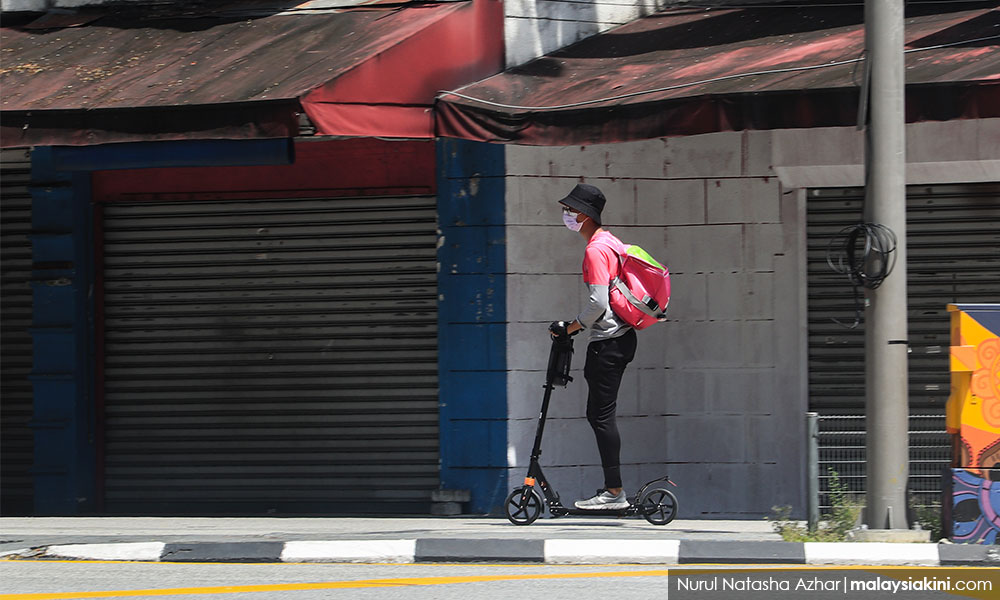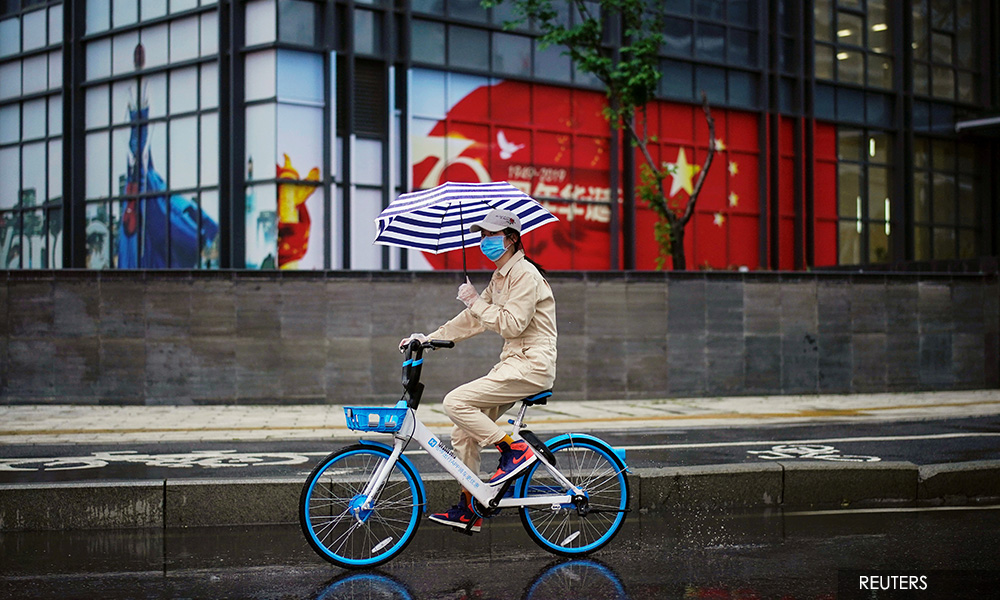So one smart minister wants to "improve" our national transport by banning small e-scooters and other micro-mobility vehicles from roads. Dear sir, as you cruise around in the air-conditioned comfort of your chauffeur-driven limousine, perhaps you may not be aware how poorly used our public transport system is.
Only 21 percent of Malaysians utilise public buses and the LRT/MRT, a huge shortfall from the government’s own target of 40 percent.
The main problem is what’s called the “last-mile connection” – that is, getting from our homes to the bus stops or LRT/MRT stations. And then, after getting off, going to our final destination. This is precisely where e-scooters play a role.
Instead of forcing people to walk under the hot sun for long distances in our sprawling terrace housing areas to get to the bus/train stops, they can ride on their e-scooters, and then take them along with them aboard the bus or train. They can then be used after disembarking, to ride to the final destination.
Oh, why can’t people take a Grab from their homes to the station, and then to the final destination? Hello, that entails playing for four Grab rides to get to/fro just one place. Not everybody is as wealthy as our well-paid transport minister, especially those who use public transport.
Why not ban motorbikes too?
“The use of micro-mobility vehicles on the road can pose dangers not only to the users but to other road users,” says Wee Ka Siong, the wise minister, in explaining the ban.
Correct, dear sir. But motorcycles and cars can also “pose dangers to the users and other road users”, to use Wee’s words. So then, should we ban all motorbikes and cars from the road?
No, it’s unfair to punish the majority of careful e-scooter users (who also value their lives) just because a minority may be reckless (just like some motorcyclists and drivers). Rather, the answer surely is to properly manage them, rather than taking the easy (and lazy) way out by just banning them.

E-scooters are part of a new mode of transport called micro-mobility vehicles and personal mobility devices (PMDs). All new technology will mean that adjustments need to be made.
Imagine when motorcars were first introduced and horse carriages, bullock carts and bicycles had to adapt. If motorcars were banned after causing accidents 120 years ago, say when animals panicked upon seeing those new “metal monsters”, we may still be riding bullock carts today!
Similarly, imagine if we have real flying cars in the future and some accidents happen. Should they then also be banned before they even, pardon the pun, take off? This knee-jerk reaction to ban-ban-ban anything inconvenient is not helpful. Even Singapore has fallen prey to it when people called to ban ordinary bicycles from roads and pedestrian pathways after some accidents happened.
We need e-scooters and other PMDs because these can help us increase the use of public transport and reduce cars on the road. They are obviously not meant for long-haul journeys, say from Seremban to Kuala Lumpur (the batteries won’t last), but they are very useful for short hops in urban areas.
Looming traffic crisis
We all know how bad traffic congestion is getting in our cities, especially since about half a million new cars are added onto our roads every year. A government with any long-range vision must have a proper plan to deal with this, and I don’t mean building a never-ending spider’s web of new toll highways to benefit some cronies. Even then, those highways will still unload their cars upon the same old narrow roads downtown. How long can this go on?
There will come a time when Malaysia’s cities will be in total gridlock. This will not only be very tiresome but it will also mean huge economic losses. For example, a World Bank study found that traffic congestion in Indonesia’s six major urban areas (Greater Jakarta, Surabaya, Medan, etc) inflict some 71 trillion rupiah (RM21 billion) in economic losses every year.

Perhaps our dear minister decided to ban e-scooters after some impatient MCA-linked people in their fancy overpowered cars complained that they are a “nuisance”. However, what’s interesting here is that bicycles, trishaws and electric bicycles are not banned and still allowed on the roads.
The legal speed limit for an electric PMD is 25km/h. That’s about the same speed as a cyclist. A trishaw is even slower (and takes up more space). So why is one banned but the others allowed? After all, if we want to be fussy, bicycles and trishaws are also a “nuisance” to cars.
If safety is really a concern, then why not treat e-scooters as motorised vehicles (which they are) and make it compulsory for all riders to get special licences? New speed limits can also be imposed. Instead of an outright ban, the proper way forward is well-considered regulation.
Bicycle/e-scooter lanes
Rather than closing down our options for mobility, the government should be encouraging more ways to help solve our looming congestion crisis. Ideally, special paths should be created for cyclists and e-scooters, say in a 2km radius around LRT/MRT stations, to help people get there safely.
The first MRT line cost RM21 billion, but I don’t think even 1 percent was spent to build such cycling/e-scooter lanes. This is why blocks of condos within 2km of MRT stations still seem “so far away” because the only way to get there safely is to drive, take a Grab or walk.
This is a shame and probably why there are still so many cars crammed onto our roads. For this, the blame lies not only with MRT Corp and the federal government but also with the Pakatan Harapan Selangor state government.
For example, there is not even a proper walking path (let alone a cycling lane) from the residential areas of Section 17 Petaling Jaya to the Phileo Damansara MRT station. I guess this wasn’t a priority when Azmin Ali was the Selangor menteri besar. What about his disciple Amirudin Shari?
Wee may point to the fact that Singapore has banned PMDs from roads and even pedestrian pathways. Yes, but they can still use a huge network of cycling lanes, which will be extended to 800km by 2023 on the tiny island.
Wee has said that PMDs may be allowed if there are cycling/e-scooter lanes but he pushed the responsibility for that onto local authorities (hello, what about federal roads?) But surely, he should understand that until Malaysia builds many more such lanes, the next best option is to allow PMDs to use the roads.

China was famous for its cyclists in communist times. When it became semi-capitalist, there was a huge spike in cars, as well as air pollution and traffic jams. Now, a better way is being found – there are over 300 million electric scooters in the country. And China is also the world's largest producer and exporter of e-scooters (and also e-bicycles).
Malaysia has been overly obsessed with cars for too long. And yes, there are deep vested interests in the car industry and tolled highways. But we can’t keep repeating old habits if we want to solve our infamous traffic jams.
A progressive government should embrace, regulate and adapt to new technology rather than just banning it. So please, let e-scooters share the road with others. - Mkini
ANDREW SIA is a veteran journalist who likes teh tarik khau kurang manis. You are welcome to give him ideas to brew at tehtarik@gmail.com.
The views expressed here are those of the author/contributor and do not necessarily represent the views of MMKtT.

No comments:
Post a Comment
Note: Only a member of this blog may post a comment.